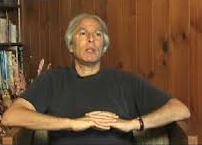Book Digest: Social Change 2.0 by David Gershon
The middle part of this book is a brilliant, practical, inspiring primer on how to pilot and scale up transformative social change initiatives, from a man who has done this with several impressive pioneering projects. Like many American books, it’s twice as long as it needs to be, so I suggest you skip Parts 1 and 3.
There’s far too much wisdom here to sum up in a blog, but here are some tasty appetisers.
The Craft of Transformation
 This is the title of Chapter 6, which includes an inspiring, detailed example of transformative leadership for Rhode Island’s commercial fishing sector, and how it moved from dog-eat-dog recrimination to a synergistic role model copied across the US. Some of the key elements of Gershon’s approach here are:
This is the title of Chapter 6, which includes an inspiring, detailed example of transformative leadership for Rhode Island’s commercial fishing sector, and how it moved from dog-eat-dog recrimination to a synergistic role model copied across the US. Some of the key elements of Gershon’s approach here are:
- Start by building trust and open mindedness in a group of key leaders via deep questions on each person’s strengths and weaknesses as a potential transformative leader.
- Promote breakthrough ideas by asking small groups to create transformation scenarios, assuming they don’t have to worry about implantation.
- Each small group creates a 5-10 minute skit to share their scenario with the whole group.
- Invite each person to go deeper (singly, in pairs, then in the big group) into their ‘growing edge’ around transformative leadership.
- Help each person create a transformative change strategy, linking their personal edge with the strengths of other group members, and a transformational scenario for the focus problem.
Drawing project design principles from nature
This fits well with the natural systems models which Wisdom Tree offer. Some of Gershon’s key ideas are:
- Encouraging people and groups to focus on their ‘growing edge’ as a way to gain focus and energy – by analogy with trees and plants.
- Using natural cycles: for example, ‘contraction is followed by expansion’, so in a contracted situation, seek a scenario which offers expansion.
- Mimic the way that in nature ‘complex tasks are solved by local interactions, not centralised leadership’ (worker ants, for example).
- Learn from nature’s ability to scale up and disseminate growth through self-organising systems.
Creating transformative teams
He stresses invaluable pointers from his projects, including neighbourhood ecoteams to reduce carbon footprint. A lot of his pointers are relevant to many other situations, for example the need for really good training and ongoing support for the leaders of such teams, and the role of strategic partnerships in recruiting both leaders and teams.
Taking a Social Innovation to Scale
Here too, Gershon offers some excellent principles, and a lot of useful experience in applying them. His model comes from the book ‘Diffusion of Innovation’ by Everett Rogers of Stanford who identifies four responses to a typical innovation: the early adopters (15% of the population), early majority (35%), and late majority (35%), and laggards (15%). Hence preaching to the choir may be the best strategy, and can create a tipping point for the early majority.
 Gershon has many useful guidelines including:
Gershon has many useful guidelines including:
- Four characteristics of projects most likely to attract early adopters
- The importance of tracking results for initiatives: the feedback is vital to sustain motivation
- The value of public recognition for the achievements of participants in an initiative, and ways that households can show that they are participating
- Finding an early-adopter network can accelerate diffusion of an initiative beyond the first stage.
Gershon has dreamed and fulfilled several valuable large social and environmental initiatives, and their detailed implementation, so his book speaks with authority. Recommended!
